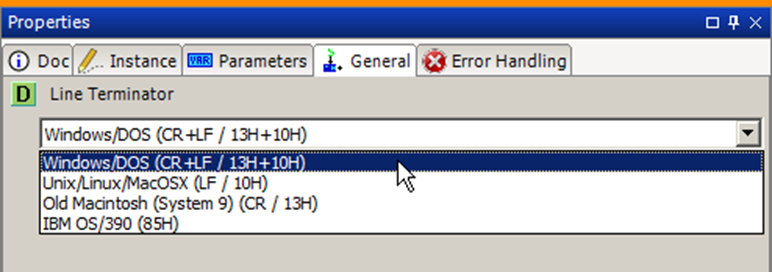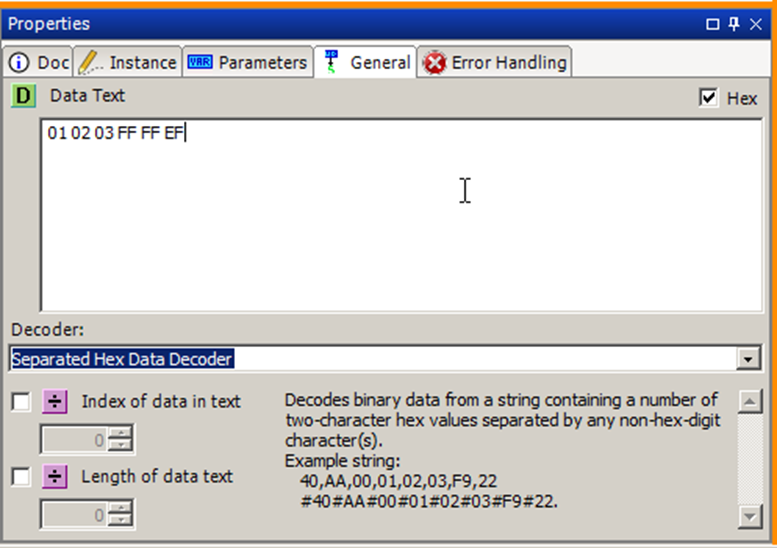Read a string from a stream
Read a number of characters from the stream.

Open the stream
Open the stream.
Close the stream
Close the stream.
Read a string from a stream
Read a number of characters from the stream.

Read a line from a steam.
Read a line of data from a stream as a string.

The line terminator can be changed on the setup page.
Read a single byte from a steam.
Read a single byte from a stream.

The byte is returned both as the actual value, and as a single character as defined by stream’s encoding.
Read from a stream until a given string is read.

Read from the stream until the given terminator is read.
Read from a steam until no data has been received for a given time.
Read from a stream until it has been silent for a defined time.
Write a string to the stream
Write a string to the stream using the encoding defined on the stream.
Write binary data to the stream. The data is taken from a string listing the binary values. To decode the data string a decoder for the specific format must be selected.
Write binary data to the stream.

The binary data is given as a hexadecimal encoded string.
Write multiple lines of text to the stream
This method has been deprecated.
Flush read/write buffers of the stream
Flush the buffers of the stream.
Read an XML element from the stream.
Read a number of bytes from the stream
Read a given number of bytes from the stream.

If the stream reports an error while reading (timeout or end-of-stream), the script can ignore this error using the Error Handling tab and the bytes which was read will still be returned.

Write an array of bytes to the stream
Write an array of bytes to a stream.

The bytes are given as an array of integers, if the integers given is outside the range of byte the ValueOutOfRangeError will be reported.
Write a string or byte-array to a stream and read the response.
Write a string or an array of bytes and wait for, and read the response.

This method is useful because other users of the stream are prevented from using the stream while the Request and wait for response step is executing, for example to prevent panels from reading and writing from the stream while waiting for a response.
The input and output data are always the same type, so the step should be marked as either using strings or a byte array.